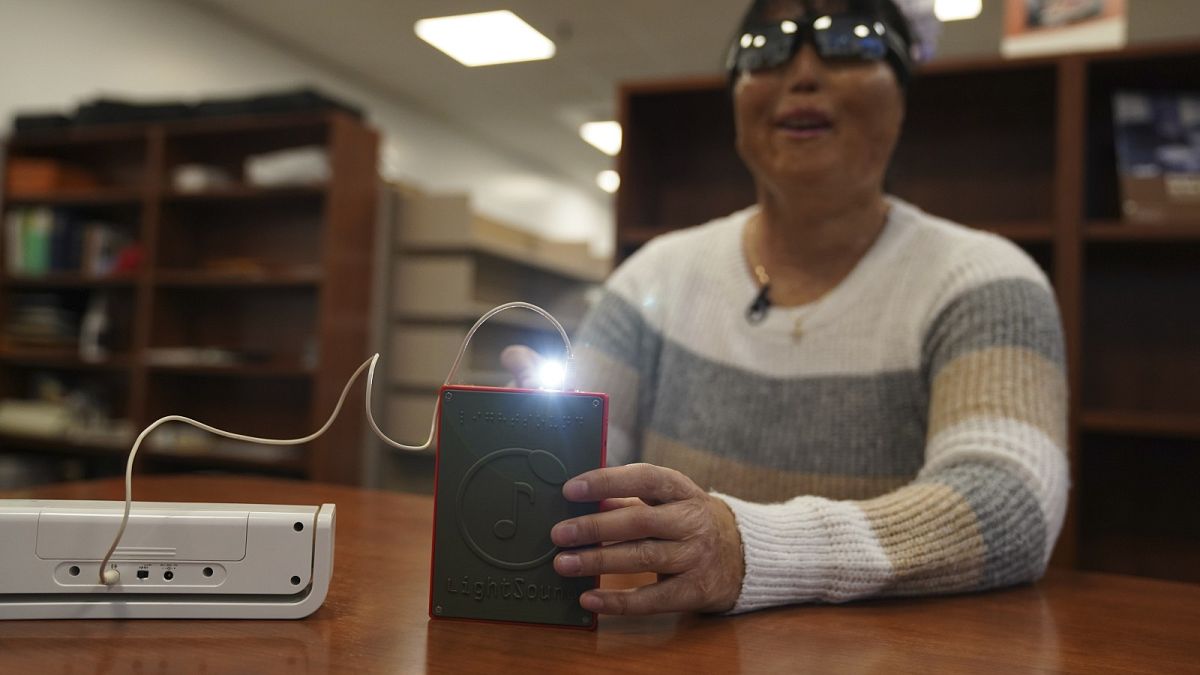If you want to watch a solar eclipse, you need to be able to look up at the sky. Now the blind and visually impaired can hear and feel the celestial event.
When a total solar eclipse passes over North America on April 8, there will be audio and tactile devices for the blind.
“A solar eclipse is something very beautiful and everyone should be able to experience it once in their life,” said Yuki Hatch, a high school student in Austin, Texas.
The visually impaired student with a love for space hopes to one day work as a computer scientist at NASA.
On the day of the solar eclipse, when the moon passes between the Earth and the sun and blocks the sunlight, she and her classmates at the Texas School for the Blind and Visually Impaired plan to sit outside on the school lawn.
You will hear a small device called a LightSound Box that converts changing light into sounds.
When the sun is shining, the loud and delicate tones of the flute will be heard. As the moon begins to obscure the sun, mid-tones reminiscent of a clarinet are heard. Darkness is represented by a deep click.
“I'm looking forward to hearing the eclipse rather than seeing it,” Hatch said.
Hearing a solar eclipse
The LightSound device is the result of a collaboration between blind astronomer Wanda Diaz Merced and Harvard astronomer Allison Perrella.
Diaz Merced regularly translates her data into sound to analyze patterns in her research.
A prototype was first used during the 2017 total solar eclipse in the United States, and the portable device has been used during other eclipses as well.
This year, they are collaborating with other institutions and plan to distribute at least 750 devices to sites in Mexico, the United States and Canada where solar eclipse events take place.
They hold workshops at universities and museums to build the devices and offer do-it-yourself instructions on the group's website.
“Heaven belongs to everyone. If this event is accessible to the rest of the world, it should also be accessible to the blind,” Diaz Merced said.
“I want students to be able to hear the solar eclipse and see the stars.”
The Perkins Library, affiliated with the Perkins School for the Blind in Watertown, Massachusetts, plans to broadcast the changing tones of the LightSound device over Zoom so members can listen online and by phone, said Outreach Director Erin Fragola.
In addition to students, many elderly people who use the library suffer from age-related vision problems, she says:
“We're trying to find ways to make things accessible to everyone.”
Others will experience the spectacle of nature through touch with the Cadence tablet from Tactile Engineering in Indiana. The tablet is about the size of a cell phone and has rows of dots that move up and down. It can be used for a variety of purposes: reading Braille, feeling graphics and movie clips, and playing video games.
“During a solar eclipse, a student can place their hand on the device and feel the moon slowly moving across the sun,” said Wenjie Lau of Tactile Engineering.
The Indiana School for the Blind and Visually Impaired began incorporating the tablet into its curriculum last year. Some students at the school witnessed the solar eclipse last October using their tablets.
10th grader Jazmine Nelson is looking forward to attending NASA's main solar eclipse viewing event at Indianapolis Motor Speedway, where a tablet will be available.
“The tablet makes you feel like you're part of something,” she said.
Her colleague Minerva Pineda Allen added: “This is a very rare opportunity that I may never get again.”

“Certified tv guru. Reader. Professional writer. Avid introvert. Extreme pop culture buff.”







More Stories
Samsung Quantum Dot TV: Art meets technology
Pitch: €56m for energy startup Reverion
Plastoplan: Plastics for Energy Transition